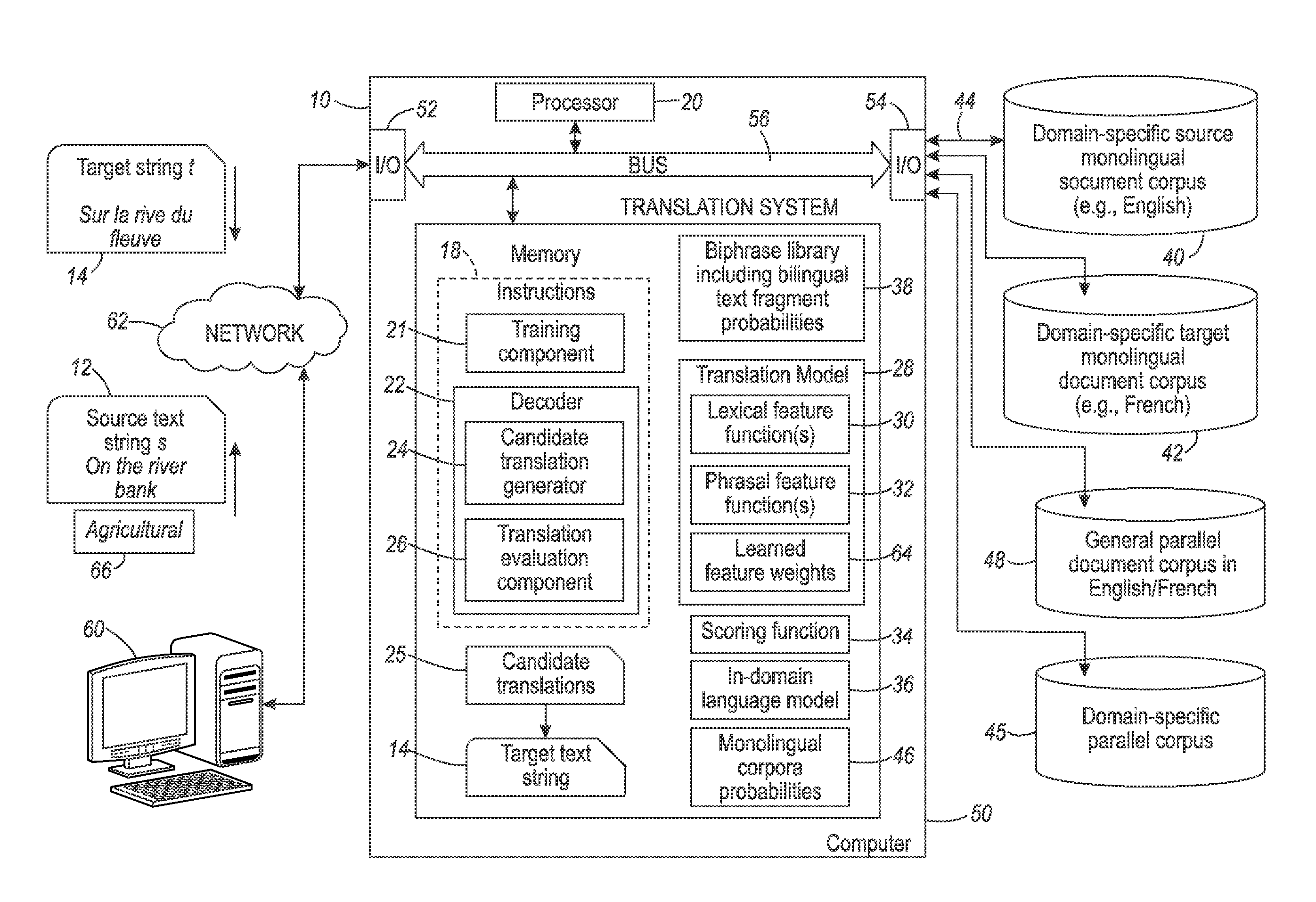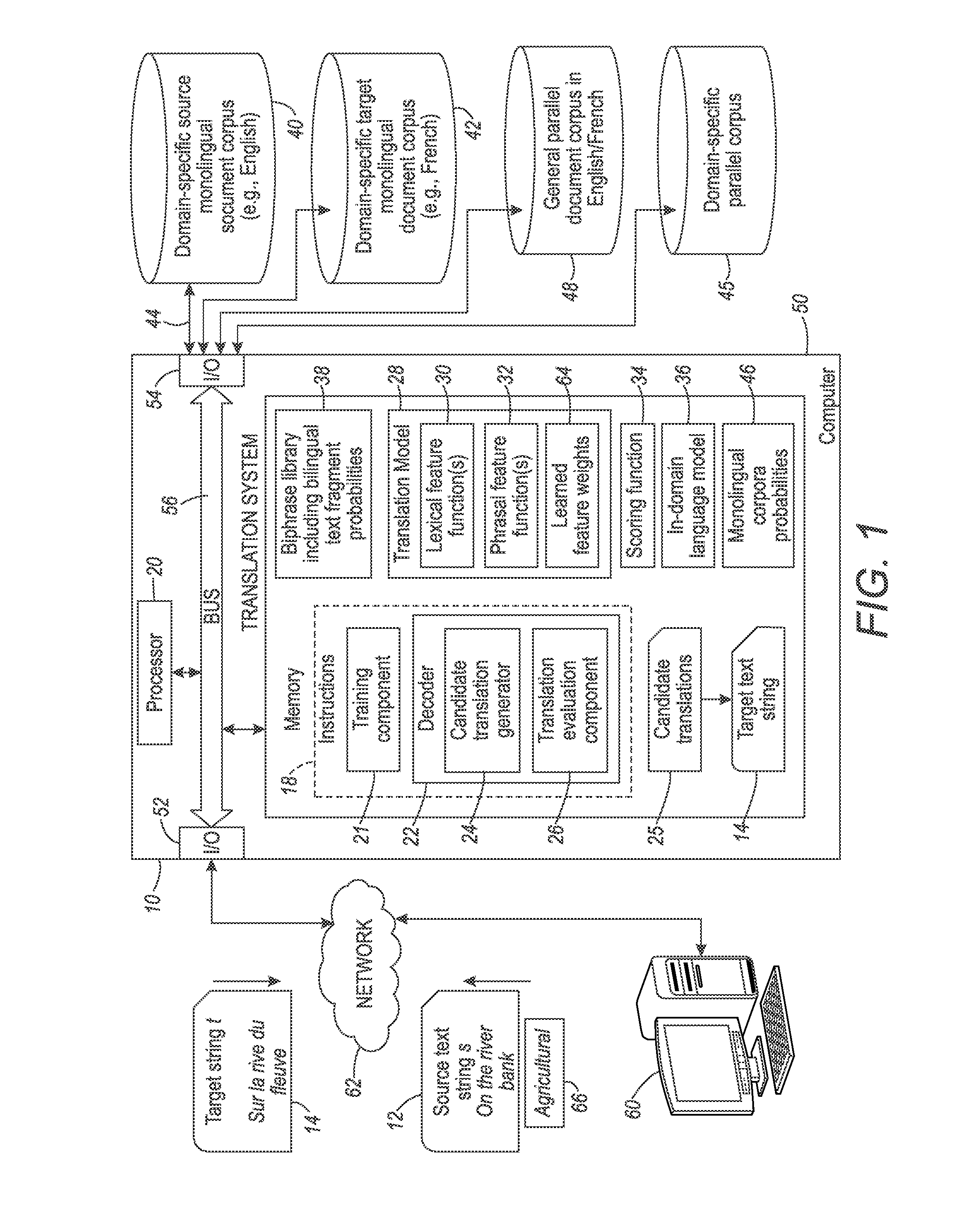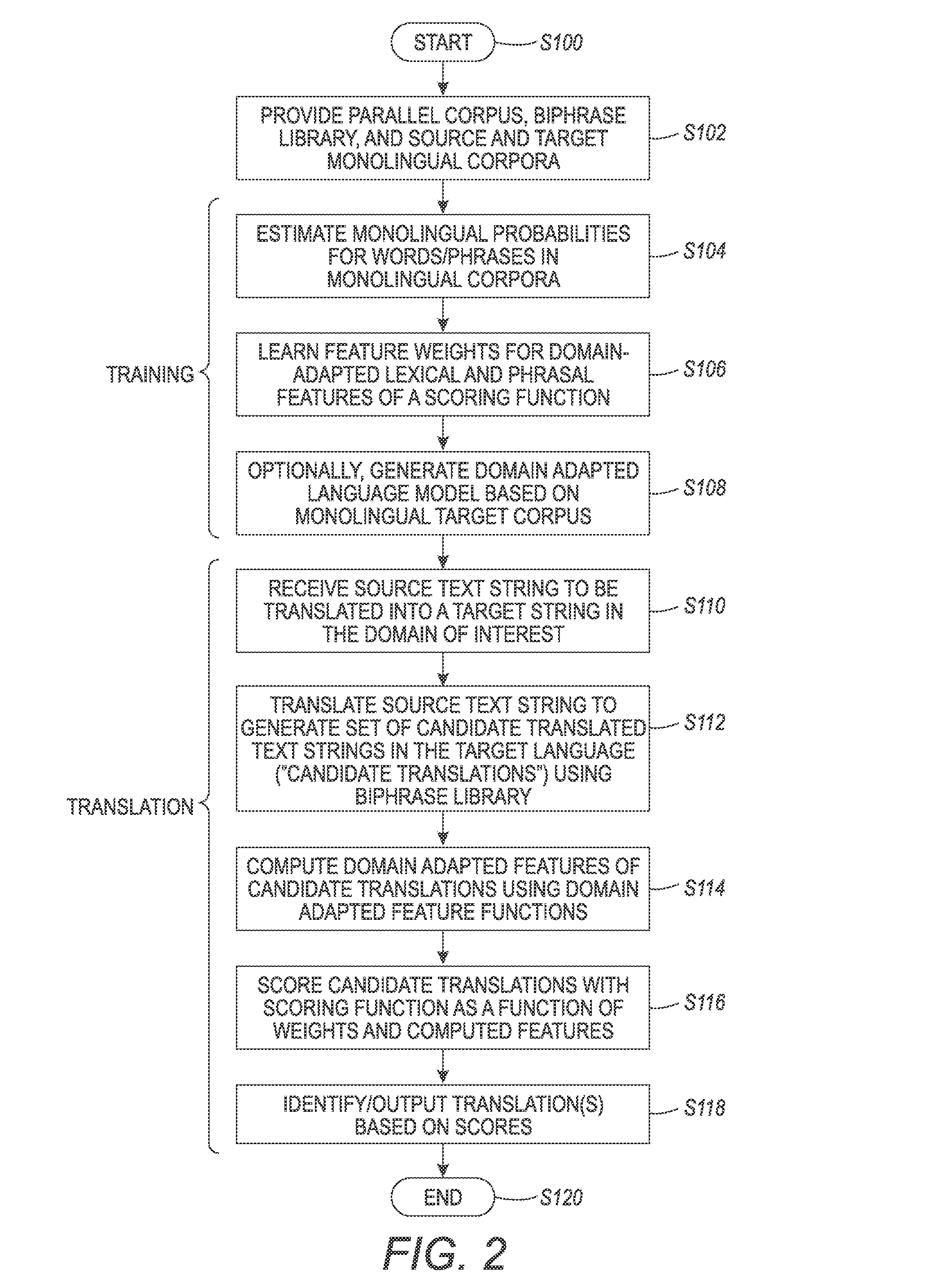Lexical and phrasal feature domain adaptation in statistical machine translation
a statistical machine translation and feature domain technology, applied in the field of statistical machine translation, can solve the problems of weaker translation performance of models trained on europarl data in medical or agricultural domains, lack of terms specific to the domain, and inability to provide as good performance outside the domain
- Summary
- Abstract
- Description
- Claims
- Application Information
AI Technical Summary
Benefits of technology
Problems solved by technology
Method used
Image
Examples
examples
[0118]Domain adaptation experiments were performed for English-Spanish and English-French translation models. The experiments were performed in different settings:
[0119]1. where no in-domain parallel data is available;
[0120]2. where only a small sample (1000 sentences) of in-domain parallel data is available, referred as InTune and used for optimization of the translation models' parameters. It will be appreciated that one thousand sentences is not large enough to train a domain-specific translation model 28 or decoder 22.
[0121]In the following experiments, the Europarl corpus is used as a large out-of-domain parallel corpus 48. In order to extend the lexical coverage, it was enriched with parallel data based on Wikipedia titles and Wiktionary entries.
[0122]The domain of adaptation selected was the agricultural domain. The in-domain data 46 was extracted from the bibliographical records 40, 42 on agricultural science and technology provided by FAO (called AGRIS) and INRA (for the En...
PUM
 Login to View More
Login to View More Abstract
Description
Claims
Application Information
 Login to View More
Login to View More - R&D
- Intellectual Property
- Life Sciences
- Materials
- Tech Scout
- Unparalleled Data Quality
- Higher Quality Content
- 60% Fewer Hallucinations
Browse by: Latest US Patents, China's latest patents, Technical Efficacy Thesaurus, Application Domain, Technology Topic, Popular Technical Reports.
© 2025 PatSnap. All rights reserved.Legal|Privacy policy|Modern Slavery Act Transparency Statement|Sitemap|About US| Contact US: help@patsnap.com



